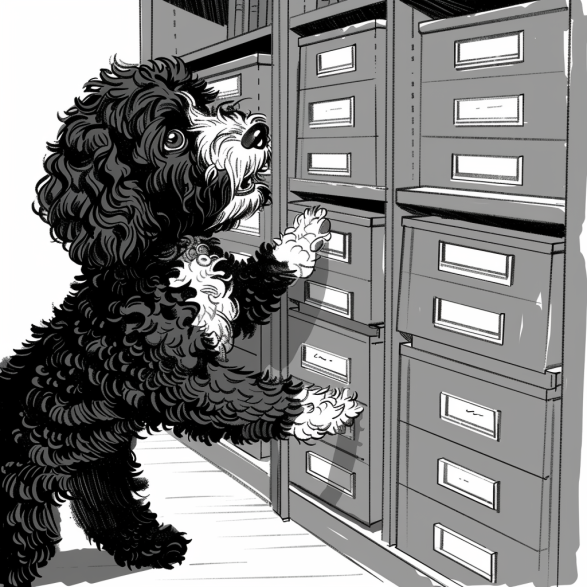Understanding WordPress Post Types
WordPress supports various post types, which are ways to categorize different kinds of content. They are essential for organizing content effectively and can impact how content is displayed and indexed by search engines, influencing SEO.
Default Post Types include:
- Posts: Usually, the primary content is presented in reverse chronological order.
- Pages: For static content such as ‘About Us’ or ‘Contact’ pages.
- Attachments: For media, such as images and documents.
- Revisions: Past versions of posts or pages.
- Navigation Menus: Items that form navigation menus.
- Custom Post Types (CPTs): Unique types created to fit specific content needs.
When creating a Custom Post Type (CPT), they should consider:
- Purpose: What unique content will it handle?
- Taxonomies: How will the content be categorized?
- Metadata: What additional information should accompany the content?
Custom Post Types have become a powerful feature for adding more structured content. Plugins are widely used to introduce new features to a site.
Proper use of post types can significantly benefit content organization, making it more accessible to users and easier for search engines to index and understand site structure. Therefore, understanding and utilizing the correct post type is crucial for a well-managed WordPress website.
Creating and Customizing Post Type Archives
When working with WordPress, understanding how to create and customize archive pages for custom post types is crucial for organization and accessibility. These archives serve as a central hub for all content related to a specific custom post type.
Enabling Archive Pages for Custom Post Types
To enable archive pages for custom post types in WordPress, you must use the register_post_type() function with the has_archive parameter set to true. This activates an archive page, automatically generated by WordPress, to list posts of the custom post type. The slug this function defines the URL structure for the archive page, which should be carefully chosen for clarity and SEO purposes.
Example code snippet to enable archive pages:
register_post_type('your_custom_post_type', array(
'has_archive' => true,
'rewrite' => array('slug' => 'your-archive-slug'),
// Other arguments ...
));
Modifying Archive Page Templates
Custom post type archive pages utilize the WordPress template hierarchy. To customize the archive page display, create a template file named archive-your_custom_post_type.php. This template file allows for specific styling and layout for the archive page and will override the default archive.php. For deeper customization, one can use WordPress hooks and filters within their theme’s functions.php file or a custom plugin.
Integrating Archives into Navigation
Incorporating archive pages into WordPress navigation menus is straightforward. Navigate to Appearance > Menus, and insert a custom link to the archive page. This inclusion enhances the site’s user experience by providing direct access to grouped content within the navigation structure.
Enhancing SEO for Archive Pages
To improve the SEO of custom post type archive pages, focus on optimizing the title, URL, and utilizing appropriate tags and categories. Plugins like Yoast SEO can assist in adding meta tags and generating sitemaps, which are beneficial for search engines to index the archive pages accurately. Furthermore, ensure that the content within the archives is engaging and provides value to visitors, as this can lead to better rankings and increased traffic.
Advanced Archive Page Techniques
Advanced techniques can be applied to the archive pages of custom post types to enhance the user experience and functionality of a WordPress site. Expertly customizing these pages can significantly benefit the content organization and accessibility.
Using Custom Queries and Loops
Custom queries and loops allow developers to display posts on archive pages based on intricate criteria such as a specific year, month, or author. For instance, utilizing the WP_Query This class allows one to create complex queries that filter posts by certain taxonomies or terms. To implement this, experienced developers can insert a custom query inside the archive template and configure the loop to iterate only the posts meeting these set parameters. This advanced technique requires careful manipulation of WordPress methods and a solid understanding of PHP code.
Incorporating Additional Elements
Beyond the posts themselves, additional elements can significantly boost the utility and appeal of an archive page. Important components like a sidebar or footer can contain related content, links to e-commerce products, or marketing materials. Featured images serve as visual anchors for the posts they represent, and customizing the layout with these can create a more engaging user experience. It’s also possible to group posts by meta information, adding sections for popular posts by year or top authors, thus enabling visitors to navigate the custom post types easily.
Leveraging Plugins for Extended Features
Plugins offer a practical route to extending the capabilities of a WordPress archive page without the need for extensive coding. A page builder like SeedProd can create highly customized archive layouts through a user-friendly interface. Other WordPress plugins can add functionality like filters to sort posts, integration with web hosting and e-commerce tools, or marketing optimizations. By selecting reputable plugins from sources like WPBeginner, users can ensure that they choose extensions that adhere to best practices and maintain a high quality standard.
Practical Uses of Custom Post Type Archives
Custom Post Type Archives offer a structured way to display grouped content that enhances the user experience on a WordPress website. These archives allow visitors to browse through related content easily, making the website more engaging and user-friendly.
Portfolio Showcases
For professionals eager to present their work, a Portfolio Showcase stands as a vital tool. WordPress custom post types provide a dedicated archive to display projects, where detailed descriptions, images, and other media can accompany each entry. This delivers an impressive user experience and arranges the often diverse portfolio pieces into a cohesive, easily navigable online gallery.
Ecommerce Product Listings
E-commerce websites rely heavily on how their products are presented. A Custom Post Type Archive for products enables clear and organized viewing. E-commerce product listings benefit from this structure as it lays out items in an intuitive manner, utilizing categories and tags for filtering. This ultimately streamlines the shopping experience for potential customers and drives conversions.
Content Libraries and Resource Hubs
Educational institutions, bloggers, and businesses often create vast content libraries or resource hubs. Using a Custom Post Type Archive, they can curate educational material, blog posts, tutorials, or movies under one URL. This optimizes the content management system, grouping similar items, like articles under specific topics, tagged resources, or themed material, ensuring users can easily find the rich array of related content.
Optimizing User Experience and Engagement
Optimizing the archive pages in WordPress enhances the user experience and increases engagement, directly contributing to a site’s success. This involves creating an intuitive navigation system, tailoring content to audience preferences, and utilizing various monetization strategies.
Improving Archive Page Navigation
Providing a user-friendly navigation menu is essential. Effectively using categories and tags allows users to find relevant content quickly. Implementing custom links within a menu to specific archive pages can further simplify the navigation process. Additionally, adding pagination prevents users from overwhelming themselves with too much information at once and aids in the easy traversal of posts.
Personalizing Content for Specific Audiences
WordPress sites must cater to their audience’s preferences to attract and retain users. Careful query management ensures only relevant posts appear on archive pages. Themes and plugins can be used to display customized post types, and the archive pages can be adjusted to highlight popular categories or tags that resonate with the audience, enhancing their connection with the content.
Monetizing Archive Pages
Monetizing archive pages can be achieved through advertising and affiliate marketing, turning the archived content into a revenue stream. Integrating discreet ads and affiliate links to products or services related to the category or tag can generate commission without disrupting the user experience. For reader-supported sites, such as blogs or online magazines, a call-to-action for donations or subscriptions within the archive pages promotes ongoing user support.













